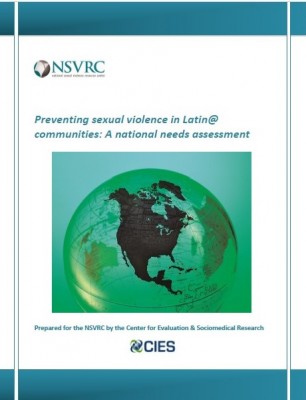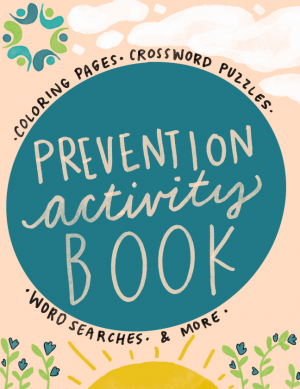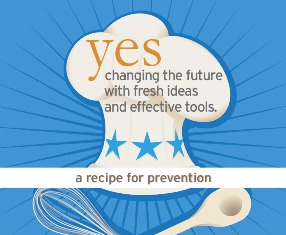Resources Library: Publications/Reports
Start a Search:
Pregnancy Associated Deaths in Virginia: New Report
"Ten Year Trends in Pregnancy-Associated Death in Virginia" is a new report using data from the Virginia Pregnancy-Associated Mortality Surveillance System. The full report can be found here.
Preventing Sexual Violence in Latin@ Communities: A National Needs Assessment

A significant proportion of people living in the United States are of Latin@ origin – about 16%, or 50.5 million, as of 2010 (U.S. Census Bureau, 2011). But the few existing studies on sexual violence against Latin@s have shown a lack of culturally relevant services for Latin@ survivors to be a substantial need. One in six Latina women report sexual victimization in their lifetime (Cuevas & Sabina, 2010). Latin@s encounter more barriers to seeking services than non-Latin@s, especially if they are immigrants (Ingram, 2007). Latin@s are also less likely to report rape victimization (Tjaden & Thoennes, 2000).
Therefore, the purpose of this needs assessment was to guage the following:
1. Who are the key groups/organizations engaging in and/or supporting sexual violence prevention and intervention in Latin@ and/or Spanish-speaking communities?
2. What are the resource needs of advocates, counselors, and other professionals in the field engaging in sexual violence prevention and intervention in Latin@ and/or Spanish-speaking communities?
3. What is the cultural competency and Spanish-language capacity of programs and organizations to serve Latin@ and/or Spanish-speaking communities?
4. What is the most effective role of the NSVRC in supporting advocates working with Latin@ and/or Spanish-speaking communities?
Prevention Activity book

The "Prevention Activity Book" is a fun and easy-to-use resource to share with community members and prevention program participants. The 11-page activity book has prevention-themed coloring pages, word jumbles, crosswords, and matching definition games. The activity book will introduce prevention terminology, "moving upstream", joyful sexuality, and the social ecological model. Color your own social ecological model! Solve the joyful sexuality word scramble! This resource was developed and designed by the Action Alliance for the Washington Coalition of Sexual Assault Programs.
Prevention Recipe Card

A lighthearted way to explain the necessary ingredients for cooking up successful prevention efforts.
Principales hallazgos de estudio “La victimización mediante violencia sexual y sus asociaciones con la salud en una muestra comunitaria de mujeres hispanas”
Esta traducción resume los principales hallazgos del estudio “La victimización de Violencia Sexual y de las asociaciones de la salud en una muestra de la comunidad de las mujeres hispanas,” realizado por K. C. Basile, S.G. Smith, M.L. Walters, D.N. Fowler, K. Hawk y M.E. Hamburger. Los hallazgos del estudio se basan en nuestra comprensión de los efectos de la violencia sexual en mujeres latinas y pueden orientar nuestras estrategias tanto de prevención de la violencia sexual como de respuesta a ésta.
En Ingles: Sexual violence can result in many health, economic, and social struggles in the lives of survivors. This resource highlights findings from a 2015 study on sexual violence against Latina women. Findings can help strengthen our prevention and response strategies with Latin@ communities.

